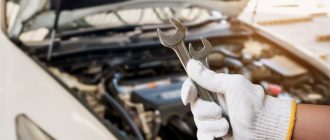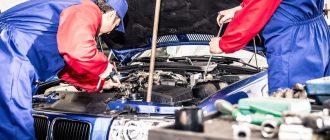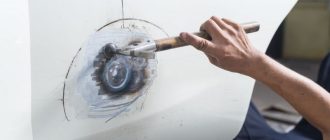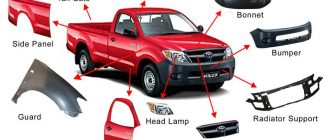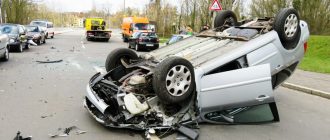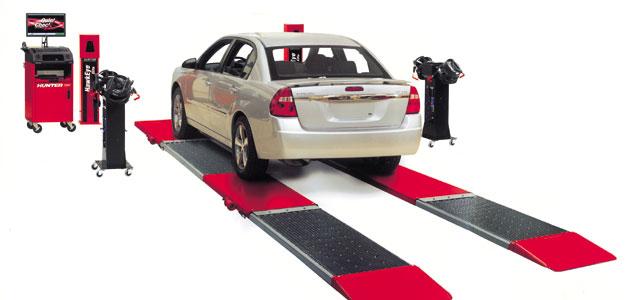
Why Alignment Checks are Crucial after a Collision
After a collision, it is imperative to conduct alignment checks on your vehicle. These checks are crucial in uncovering potential issues that may have arisen as a result of the collision. Alignment refers to the angle and position of your vehicle’s tires relative to the road and each other. When your vehicle’s alignment is off, it can lead to a range of problems that affect both the safety and performance of your vehicle.
Alignment checks are necessary after a collision because the impact of the collision can cause misalignment in the suspension and steering components of your vehicle. Even a minor collision can throw off your vehicle’s alignment, leading to uneven tire wear, decreased fuel efficiency, and compromised handling. Failure to address misalignment issues can result in more expensive repairs down the line.
By conducting alignment checks after a collision, you can uncover potential issues and address them before they become more serious. A professional alignment check will involve measuring and adjusting various angles and components of your vehicle’s suspension and steering system. This will ensure that your vehicle is aligned correctly and functioning optimally.
Ultimately, alignment checks are crucial after a collision to maintain the safety, performance, and longevity of your vehicle. Don’t overlook this important step after an accident – get your alignment checked by a qualified professional to uncover any potential issues and keep your vehicle running smoothly.
Importance of Alignment Checks
After a collision, it is crucial to perform alignment checks on your vehicle. Understanding why these checks are necessary can help uncover potential issues that may arise as a result of the collision.
Alignment refers to the positioning of your vehicle’s wheels relative to each other and the road surface. A collision can easily disrupt the alignment, causing various problems and issues that may not be immediately noticeable.
One of the primary reasons why alignment checks are essential after a collision is to ensure your vehicle’s safety. Misaligned wheels can affect your vehicle’s handling, stability, and overall performance. Driving with misaligned wheels can make it challenging to control your vehicle, especially in emergency situations, putting you and other road users at risk.
Furthermore, misalignment can lead to accelerated tire wear. When the wheels are not properly aligned, they may exert uneven pressure on the tires, causing them to wear unevenly. This can reduce the lifespan of your tires and increase the risk of blowouts or punctures, further compromising your safety.
In addition to safety concerns, misaligned wheels can also have a negative impact on your vehicle’s fuel efficiency. When the wheels are not aligned correctly, it can result in increased rolling resistance, meaning your vehicle has to work harder to move forward. This can lead to decreased fuel economy and increased fuel consumption, costing you more money at the pump.
Lastly, ignoring alignment checks after a collision can result in compounded damage over time. Misalignment can place additional stress on various components of your vehicle’s suspension system, such as tie rods, control arms, and ball joints. Eventually, this can lead to premature wear and tear and may require costly repairs if left unresolved.
In conclusion, alignment checks are crucial after a collision to ensure your vehicle’s safety, prevent accelerated tire wear, improve fuel efficiency, and minimize long-term damage. It is recommended to consult a professional mechanic who can properly assess and correct any alignment issues that may have occurred as a result of the collision.
Detecting Hidden Issues
Alignment checks are crucial after a collision. They help uncover potential hidden issues that may arise after a collision. Whether it’s a minor fender bender or a major accident, the impact of a collision can cause damage to a vehicle’s alignment.
After a collision, it is important to have a professional perform an alignment check. This involves checking the angles of the wheels and making sure they are aligned properly. Misaligned wheels can cause uneven tire wear, poor handling, and decreased fuel efficiency.
During the alignment check, the technician will also inspect other components of the suspension and steering systems. These components could have been damaged in the collision and may not be immediately noticeable. Detecting these hidden issues early on can prevent further damage and ensure the vehicle is safe to drive.
Alignment checks can uncover hidden issues such as bent or damaged suspension parts, worn-out steering components, or a misaligned frame. These issues may not be visible to the naked eye, but can greatly affect the performance and safety of the vehicle.
By performing an alignment check after a collision, you can detect any hidden issues and address them before they worsen or cause additional problems. This will help ensure the longevity of your vehicle and keep you safe on the road.
Preventing Further Damage
After a collision, it is crucial to prioritize alignment checks to prevent further damage to your vehicle. When a collision occurs, the impact can cause misalignment in several components of your vehicle, including the suspension system, axles, and steering. Ignoring these misalignments can lead to various issues that can worsen over time.
Alignment is essential for your vehicle’s performance, safety, and overall longevity. Misalignment can result in uneven tire wear, difficulty in steering, decreased fuel efficiency, and compromised handling. These issues not only affect the driving experience but also pose risks to your safety on the road.
By conducting alignment checks after a collision, you can identify and address any misalignments promptly. Professional technicians can use specialized equipment to measure and adjust the angles and positions of your vehicle’s wheels and components. This ensures that everything is properly aligned, allowing for optimal performance and safety.
Regular alignment checks are also essential for preventive maintenance. Even if you haven’t recently been involved in a collision, it is a good practice to get your vehicle’s alignment checked periodically. This helps catch any misalignments early on before they develop into more significant issues that could result in costly repairs.
Ultimately, understanding why alignment checks are crucial after a collision is essential to prevent further damage. By prioritizing these checks and addressing any misalignments promptly, you can ensure your vehicle’s optimal performance, safety, and longevity.
Ensuring Road Safety
After a collision, conducting alignment checks is crucial for ensuring road safety. These checks are necessary to uncover potential vehicle issues that may arise as a result of the accident.
Alignment refers to the proper positioning of a vehicle’s wheels in relation to each other and the road. A collision can cause misalignment, which can lead to several problems. For instance, it can affect the vehicle’s handling, causing it to pull to one side or feel unstable on the road. Additionally, misalignment can result in uneven tire wear, reducing the lifespan of the tires and compromising their grip on the road.
By performing alignment checks after a collision, professionals can determine if any adjustments need to be made to restore proper wheel alignment. This typically involves using specialized equipment to measure the angles and positions of the wheels. If misalignment is detected, the necessary adjustments can be made, such as realigning the wheels and replacing any damaged suspension components.
Ensuring road safety is of utmost importance after a collision, as misaligned wheels can significantly impact the vehicle’s stability and handling. It is essential to address any misalignment issues promptly to prevent further damage and ensure the safe operation of the vehicle.
Impact of Collisions
After a collision, conducting alignment checks is crucial to uncover potential vehicle issues. A collision can cause significant damage to various components of a vehicle, including the wheels, suspension system, and frame. Even a minor collision can result in misalignment, which can lead to further problems if left unaddressed.
Alignment refers to the positioning of the wheels and suspension system in relation to the vehicle’s frame. When a collision occurs, the impact can cause the wheels to be knocked out of alignment. This misalignment can result in uneven tire wear, reduced handling capabilities, and decreased fuel efficiency.
Alignment checks after a collision are necessary to identify any issues and ensure that the vehicle is restored to its proper alignment. During these checks, a professional technician will use specialized equipment to measure the angles and position of the wheels and suspension system.
By conducting alignment checks, potential vehicle issues can be identified and rectified promptly. It allows for any necessary adjustments or repairs to be made to restore proper alignment, thus preventing further damage and ensuring the safety and performance of the vehicle.
Misalignment of Components
After a collision, one of the potential issues that may arise is the misalignment of components. Alignment checks are crucial in identifying and addressing this problem.
When a vehicle is involved in a collision, various components can be affected. The impact from the collision can cause these components to become misaligned, leading to potential performance, handling, and safety issues.
Alignment refers to the proper positioning of different parts of a vehicle. This includes the wheels, suspension system, steering components, and other essential elements. When these components are misaligned, it can result in uneven tire wear, poor handling, and decreased stability.
It is important to perform alignment checks after a collision to ensure that all components are properly aligned. This involves using specialized tools and equipment to measure and adjust the position of different parts. By identifying and correcting any misalignment, potential issues can be addressed before they become more serious problems.
Additionally, misalignment can also indicate underlying damage to the vehicle. By conducting alignment checks, technicians can uncover potential issues that may not be visible to the naked eye. This allows for proper repairs and ensures that the vehicle is restored to its pre-collision condition.
In conclusion, alignment checks are crucial after a collision to uncover potential misalignment of components. By addressing this issue, it helps to ensure the vehicle’s performance, handling, and safety are not compromised.
Damaged Suspension
Alignment checks are crucial after a collision, as they can uncover potential issues with your vehicle’s suspension. The suspension system plays a vital role in providing a smooth and comfortable ride, as well as ensuring proper handling and stability.
A collision can easily damage the suspension components, including the shocks, struts, control arms, and springs. Even a minor collision can throw off the alignment of these parts, leading to issues such as uneven tire wear, pulling to one side, or a bumpy ride.
When your suspension is damaged, it not only affects the overall performance of your vehicle but can also compromise your safety on the road. A misaligned suspension can cause your vehicle to handle poorly, making it difficult to maneuver and control. This can be especially dangerous in emergency situations.
By conducting an alignment check after a collision, you can identify any suspension damage and address it promptly. This will help ensure that your vehicle is back in proper working condition, keeping you and your passengers safe on the road.
Remember, even if there are no obvious signs of suspension damage after a collision, it’s still important to have your vehicle checked by a professional. They have the expertise and equipment to detect any hidden issues that may arise later on.
Don’t overlook the importance of alignment checks, particularly when it comes to your vehicle’s suspension. After a collision, make sure to schedule a thorough inspection to uncover any potential problems and prevent further damage. Your safety and the longevity of your vehicle depend on it.
Signs of Misalignment
After a collision, checking the alignment of your vehicle is crucial. Misalignment can cause various issues and affect the performance and safety of your car. Here are some signs that indicate your vehicle may be misaligned:
|
Pulling to one side: If your car drifts or pulls to one side while driving, it may be a sign of misalignment. This can make steering difficult and unsafe. |
|
Uneven tire wear: Check your tires regularly for signs of uneven wear. Misalignment can cause tires to wear out faster on one side than the other. 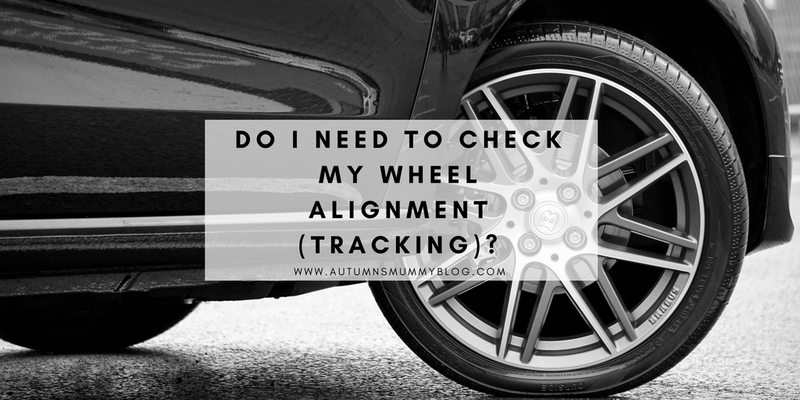 |
|
Steering wheel vibration: If you feel a vibration in your steering wheel, especially at high speeds, it could indicate misalignment. This can also be a sign of other issues, so it is important to have it checked by a professional. |
|
Off-center steering wheel: If your steering wheel is not centered when driving straight, it may be a sign of misalignment. This can affect the handling and stability of your vehicle. |
|
Poor handling: If your car feels unstable or difficult to control, especially around corners, it could be due to misalignment. This can increase the risk of accidents. |
Uneven Tire Wear
One common issue that can arise after a collision is uneven tire wear. This occurs when the tires on a vehicle do not wear evenly across the tread surface. It can be caused by a variety of factors, including misalignment resulting from the collision.
Uneven tire wear can lead to a number of problems, including reduced traction, decreased fuel efficiency, and a shorter tire lifespan. When the tires are not properly aligned, certain areas of the tread will experience more wear than others. This can cause the tires to become unbalanced and result in a rough or unstable ride.
After a collision, it is important to have an alignment check performed to ensure that the tires are wearing evenly. This involves measuring and adjusting the angles of the wheels to ensure that they are all aligned properly. By doing so, you can prevent further damage to the tires and improve the overall performance and safety of your vehicle.
Furthermore, an alignment check can uncover potential issues with other components of the vehicle’s suspension system. This includes the control arms, bushings, and struts. If these components were damaged in the collision, they may need to be repaired or replaced in order to restore proper alignment and prevent further problems.
In conclusion, performing alignment checks after a collision is crucial to uncovering potential vehicle issues, such as uneven tire wear. By addressing these issues promptly, you can ensure the long-term health and performance of your vehicle.
Vehicle Pulling
After a collision, it is crucial to perform alignment checks on your vehicle. One potential issue that may arise is vehicle pulling. This refers to a situation where your vehicle tends to veer towards one side while driving straight.
Vehicle pulling can occur due to misalignment of the wheels. In a collision, the impact can cause the suspension and steering components to shift, resulting in an improper wheel alignment. This misalignment can cause uneven tire wear, decreased fuel efficiency, and difficulty in handling the vehicle.
To determine if your vehicle is pulling, you can perform a simple test. Find a straight and flat road, and release the steering wheel while keeping your hands near it. If the vehicle starts to drift to one side, it indicates pulling. It is important not to ignore this issue, as it can lead to further damage and safety hazards.
To address vehicle pulling, it is recommended to have a professional mechanic perform an alignment check. They will inspect the suspension and steering components, adjust the alignment angles, and ensure that your vehicle is back to its proper alignment. This will not only help alleviate pulling but also prevent any other potential vehicle issues that may arise after a collision.
Remember, alignment checks are crucial after a collision. By addressing vehicle pulling promptly, you can ensure the safety and longevity of your vehicle.
Steering Wheel Vibration
After a collision, it is important to assess the condition of your vehicle’s alignment, including the steering wheel. One potential issue that may arise is steering wheel vibration.
Steering wheel vibration can occur after a collision due to misalignment of the wheels.
When the wheels are not properly aligned, it can result in a number of issues, including vibrations felt through the steering wheel. This vibration can be felt at various speeds, and it can range from a slight tremor to a more noticeable shaking.
There are several reasons why steering wheel vibration can occur after a collision:
- Alignment issues: The impact of a collision can knock the wheels out of alignment, causing the steering wheel to vibrate.
- Tire damage: A collision can cause damage to the tires, such as uneven wear or bulges, which can result in steering wheel vibration.
- Suspension damage: The suspension system can be affected by a collision, leading to misalignment and subsequent vibrations.
- Wheel damage: If the collision resulted in damage to the wheels, such as bent rims or axle issues, it can cause the steering wheel to vibrate.
It is crucial to have an alignment check after a collision to identify and address any misalignment issues. Ignoring steering wheel vibration can lead to further damage to your vehicle and compromise your safety on the road.
If you experience steering wheel vibration after a collision, it is best to consult with a qualified mechanic who can assess the situation and perform any necessary repairs or adjustments to restore proper alignment.
Crooked Steering
After a collision, it is crucial to perform alignment checks to uncover any potential issues with your vehicle. One of the common problems that can arise is crooked steering.
When your steering becomes crooked, it means that your wheels are misaligned. This misalignment can happen as a result of a collision, causing a range of problems. Crooked steering can make your vehicle steer to one side, making it difficult to maintain control and stay in your lane.
There are several reasons why alignment checks are necessary after a collision. First, misaligned wheels can cause uneven tire wear, which can lead to decreased tire life and compromised driving safety. Second, crooked steering can increase the risk of accidents, as it can affect your ability to steer properly and react to sudden changes on the road. Lastly, misalignment can put extra strain on various components of your vehicle, leading to increased wear and potential mechanical failures.
By performing alignment checks after a collision, you can identify and address any issues with your steering alignment. This can help prevent further damage to your vehicle and ensure your safety on the road. If you notice any signs of crooked steering, such as your vehicle pulling to one side or a sensation of instability, it is important to take your vehicle to a professional for a thorough inspection and alignment check.
Remember, alignment checks are crucial after a collision to uncover potential vehicle issues, including crooked steering. Don’t neglect this important step in the repair process, as it can help keep you safe and maintain the optimal performance of your vehicle.
Professional Alignment Services
After a collision, it is crucial to have your vehicle’s alignment checked by a professional. Alignment refers to the way your car’s wheels are positioned and aligned with each other and the road. Even a minor fender bender can knock your vehicle’s alignment out of whack, causing a number of issues if left unaddressed.
Why is alignment so important after a collision? Well, when your wheels are out of alignment, it can lead to uneven tire wear, poor handling, and decreased fuel efficiency. Additionally, misaligned wheels can put extra stress on suspension and steering components, potentially leading to costly repairs down the line.
By having a professional alignment service performed after a collision, you can ensure that your vehicle is properly aligned and driving safely. During the alignment process, a skilled technician will use specialized equipment to measure and adjust the angles of your wheels, bringing them back into proper alignment. This will help to prevent further damage to your tires and vehicle components, and ultimately extend the lifespan of your vehicle.
It’s important to note that even if you don’t notice any obvious issues with your vehicle’s alignment after a collision, it’s still a good idea to have it checked by a professional. Some alignment problems may not be immediately apparent, but can still have negative effects on your vehicle’s performance and safety over time.
Don’t delay in getting your vehicle’s alignment checked after a collision. Trusting a professional alignment service to assess and correct any issues will help to ensure that your vehicle is back on the road in optimal condition, and help to prevent further problems down the line.
Question-answer:
How can a collision affect the alignment of a vehicle?
During a collision, the force and impact can cause the wheels to be pushed out of alignment. This can result in issues such as uneven tire wear, pulling to one side, or a crooked steering wheel.
What are the signs that indicate a possible misalignment after a collision?
Some signs of misalignment after a collision include the vehicle pulling to one side, the steering wheel not being centered when driving straight, uneven tire wear, or a vibrating sensation while driving.
Why is it important to get an alignment check after a collision?
Getting an alignment check after a collision is crucial because misalignment can lead to further issues and potentially affect the overall performance and safety of the vehicle. By detecting and correcting any alignment problems early on, you can prevent more serious damage and ensure a smooth and safe driving experience.
What can happen if misalignment issues are not addressed after a collision?
If misalignment issues are not addressed after a collision, it can result in uneven tire wear, decreased fuel efficiency, poor handling and stability, and potential damage to the suspension system. Ignoring alignment problems can lead to more costly repairs down the line and compromise the safety of the vehicle.
